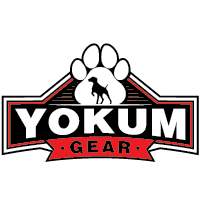Off-leash training is often regarded as the pinnacle of dog obedience and control. It not only ensures your dog's safety but also offers them the freedom to explore their surroundings without restrictions. However, it requires a structured approach, patience, and consistency. Here's a comprehensive guide on how you can master off-leash training for your dog.
Understanding the Basics
Before venturing into off-leash training, it's crucial to have a solid foundation of basic obedience commands such as sit, stay, come, and heel. These commands form the cornerstone of effective off-leash control. Make sure your dog reliably responds to these commands in a controlled environment and when distractions are minimal.
The Importance of Recall Training
Recall, or the come command, is arguably the most critical aspect of off-leash training. A reliable recall ensures that your dog will return to you promptly, even when tempted by distractions. Start by practicing in a fenced area or using a long leash. Gradually increase the distance and difficulty by incorporating distractions and varying environments.
Implementing Positive Reinforcement
Positive reinforcement is key to successful off-leash training. Always reward your dog with treats, praise, or playtime when they respond correctly to commands. Consistent rewards help reinforce positive behavior and make training a rewarding experience for your dog. Avoid using punishment or negative reinforcement, as it can create fear and anxiety, making training less effective.
Utilizing High-Value Rewards
During off-leash training, it's beneficial to use high-value rewards, such as your dog’s favorite treats or toys. These rewards should be reserved specifically for training sessions to maintain their appeal. High-value rewards motivate your dog to focus and respond promptly, even in challenging situations.
Gradual Exposure to Distractions
Successfully training your dog to be off-leash involves gradually exposing them to various distractions. Start in a quiet, controlled environment and progressively introduce new, more challenging distractions. This could include other dogs, people, wildlife, or busy streets. Training sessions should remain positive and controlled, ensuring your dog remains attentive and responsive.
Building Trust and Relationship
Off-leash training is as much about building trust and a strong bond with your dog as it is about obedience. Spend quality time with your dog, engage in interactive play, and participate in activities that encourage trust and cooperation. A strong bond enhances your dog’s willingness to respond and stay close when off-leash.
Using Safety Equipment Wisely
While the goal is for your dog to be off-leash, safety should always be a priority. During training, using a long leash or a tracking line can provide a safety net while giving your dog a sense of freedom. These tools allow you to maintain some control while allowing your dog to venture further.
Practicing Patience and Consistency
Off-leash training requires patience and consistency. Each dog learns at their own pace, and it's important not to rush the process. Regular, short training sessions are more effective than extended, infrequent ones. Consistency in commands, rewards, and expectations is crucial to reinforcing desired behaviors.
Understanding Your Dog's Limits
Every dog has unique capabilities and limitations. Some dogs may excel at off-leash training, while others might require more time and patience. It's important to recognize your dog's individual temperament, energy levels, and learning style. Adjust your training approach accordingly to suit their needs and capabilities.
Embracing Ongoing Training
Off-leash training is not a one-time event but an ongoing process. Even after your dog has mastered basic off-leash skills, regular practice is essential to maintain their proficiency. Incorporate off-leash activities into your routine, such as hiking, beach outings, or off-leash parks, to reinforce training and enhance your dog's experience.
By following these steps with dedication and love, you can achieve a rewarding and safe off-leash experience for both you and your dog. Remember, the journey to mastering off-leash training is as important as the destination. Enjoy the process, celebrate small victories, and cherish the bond you build along the way.

